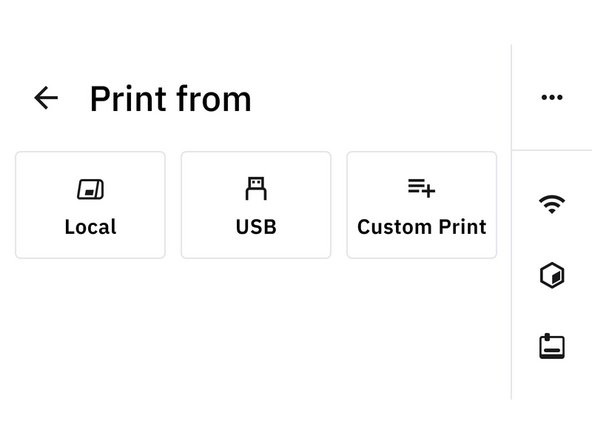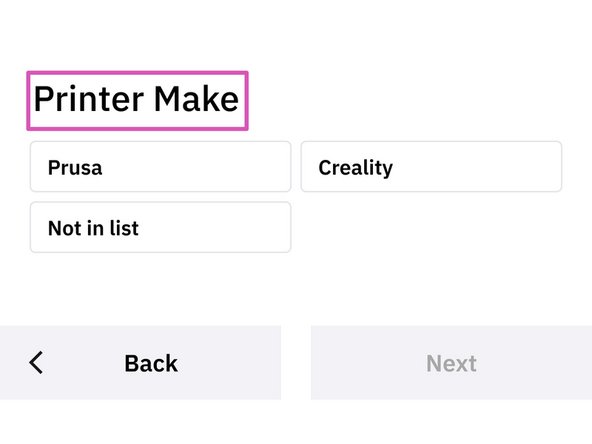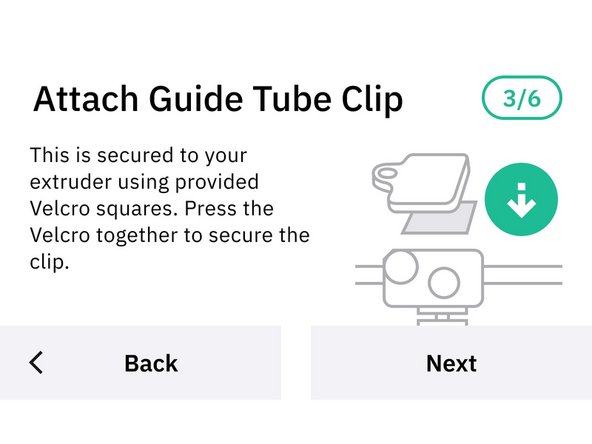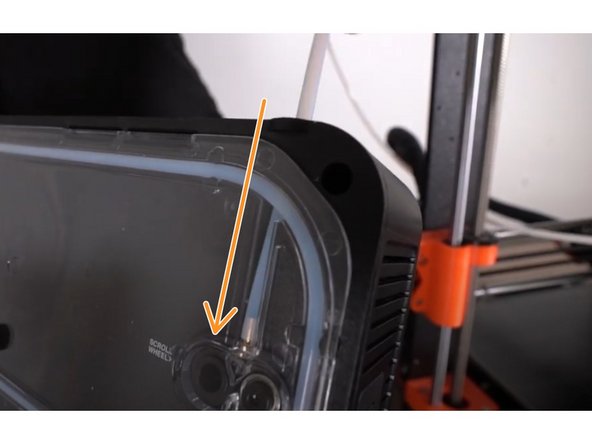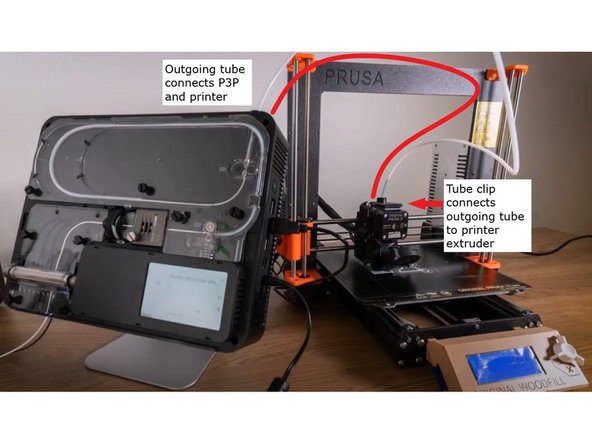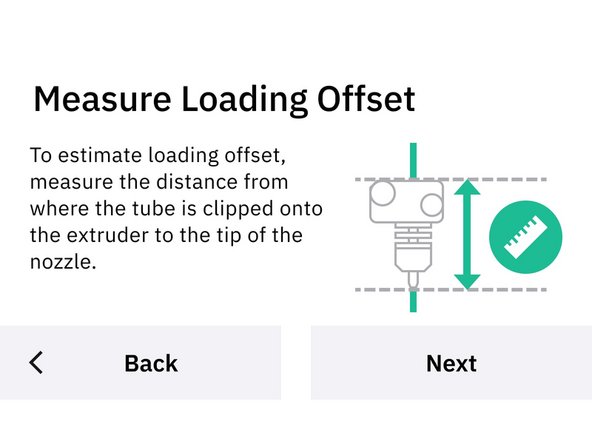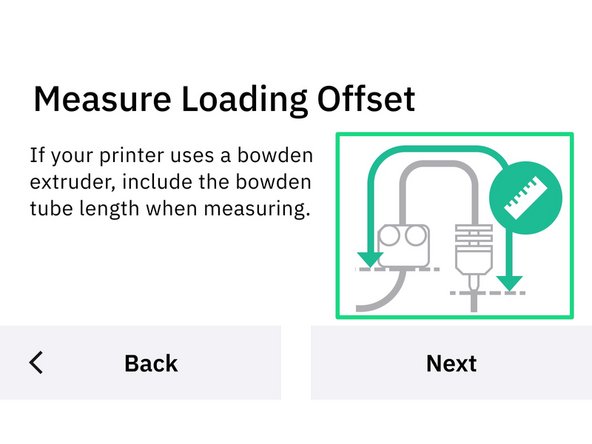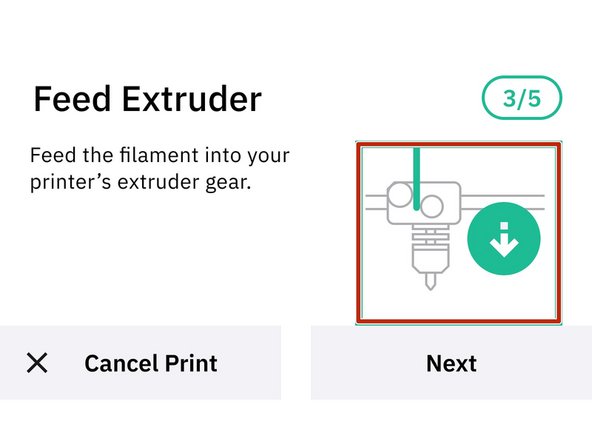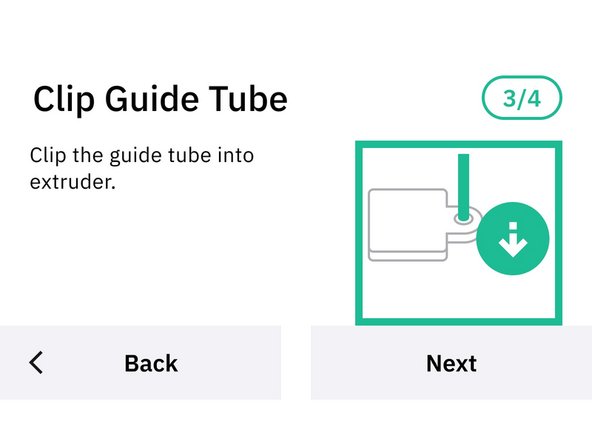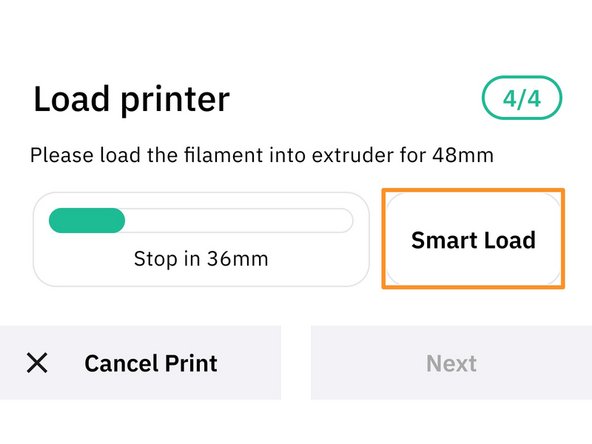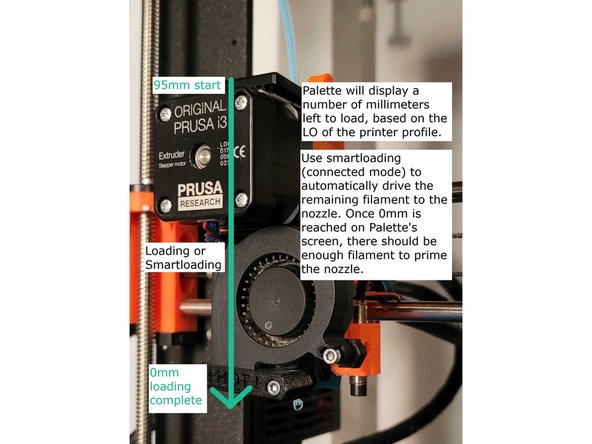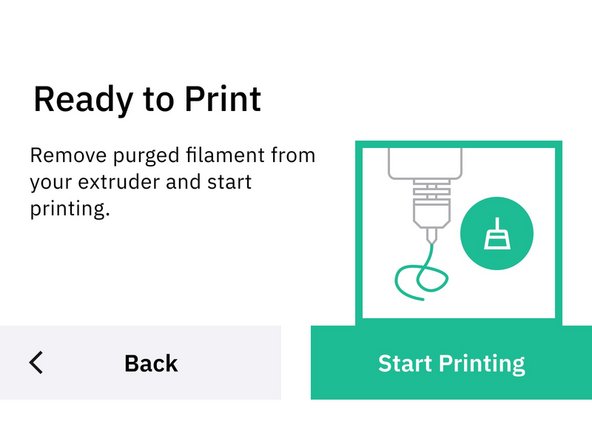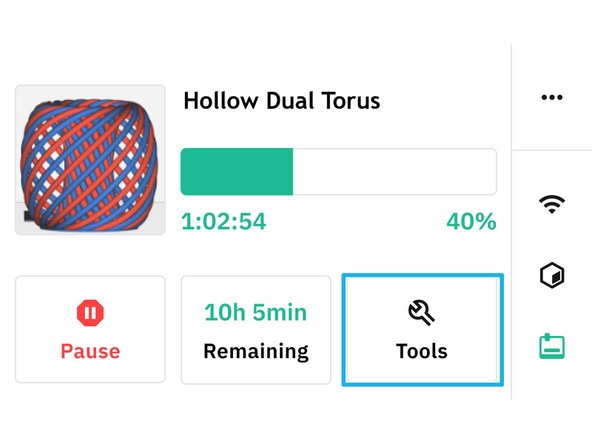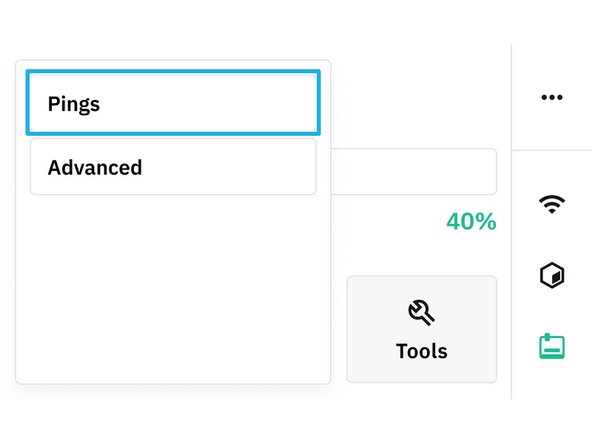Introduction
In this guide, you will learn how to:
- Connect the printer to Palette 3 by USB
- How to measure the loading offset for your extruder and how it's used for calibration
- How to start a print
Connected Mode printing is where Palette's splicing and the printer's G-Code are combined into one file. A USB cable is used create a digital connection between Palette 3 and the printer, and stream that single file between the two devices.
If you would like to connect Palette 3 to the Internet and Canvas, please follow the steps here.
If you have not yet setup a printer profile in Canvas and sliced the calibration print, please first complete this Canvas Setup Guide
--
Here are video tutorials on how to print in connected mode for direct drive and bowden extruder printers.
Connected Mode Printing with Bowden Printers
Video Overview
-
-
After slicing your first multi-color project, you can download the file if you wish to transfer it to a USB drive.
-
Or, transfer the .mcfx to Palette 3 by either sending the file directly (available if P3 is connected to Internet and Canvas).
-
-
-
If the printer connection was skipped during the initial setup, this can still be done from the status bar menu.
-
Connect Palette and the printer by USB cable.
-
If unable to auto-connect, please try a manual connection by entering the baud rate and port for the printer.
-
-
-
From Palette's menu screen, tap on Start Print.
-
Select the location for the .mcfx file.
-
If Palette 3 is offline, the manual printer selection screen will be skipped.
-
-
-
Check that the extruder clip is attached to the printer, using velcro provided.
-
Ensure that the correct outgoing tube length is selected on-screen, and inserted into Palette's output only. The outgoing tube should be unattached to the tube clip, so that filament can be loaded into the extruder first.
-
The purpose of the extruder clip is to connect Palette's outgoing tube directly to the printer's extruder. This tube clip and outgoing tube keeps the filament production and delivery to the printer as consistent as possible, to help maintain calibration. Note: This photo shows the tube/clip installation while a print is in progress
-
-
-
-
Enter the loading offset (LO). To do this, please enter the length between the tube clip on the extruder to the tip of the nozzle.
-
For bowden printers, please measure from the bottom of the extruder, the bowden tube length, and hot end to the nozzle point.
-
The LO entered can be -/+ 5mm of the actual distance from the tube clip/extruder to nozzle.
-
After saving the LO, your printer’s calibration data will be saved. If you are not using one of the preset printer profiles on Palette, feel free to rename the printer for easier identification.
-
If a preset printer was selected, the loading offset is already stored with the preset. If the printer has a modified extruder, the loading offset will require measurement.
-
For calibration purposes, the loading offset is used to determine how much filament to create in order to start the print. An accurate loading offset will produce enough filament to prime the nozzle.
-
This step is only necessary when starting a new calibration. Future prints with the same Canvas printer profile will use this LO.
-
-
-
Palette will initialize, before prompting to load filament into the inputs.
-
The printer will automatically preheat while Palette produces splices.
-
Once Palette is done creating the initial splices, there should be about an inch of filament coming out of the outgoing tube. Insert this filament end into the extruder while using the printer's extruder controls to move filament forward, so that it is gripped and engaged by the printer's extruder gears.
-
During this step, you should be able to feel the filament gripped by the extruder as it's driven forward.
-
If Palette is connected to WiFi, this can be done through the device controls on Canvas. Or, you can use the printer's screen/controls to drive filament forward through the extruder.
-
For bowden extruders, an additional 10-15cm of filament can be pulled from the tube and inserted manually through the bowden extruder to reach the nozzle quicker.
-
-
-
Once the filament is gripped by the extruder’s gears, continue jogging the filament to insert the tube end into the clip grommet.
-
As filament is being driven to the nozzle, it will cause the tube to move closer to the clip closing the gap. This will allow it to be inserted into the hole without putting excessive pressure on the filament.
-
-
-
Smartloading in connected mode with the printer, will automatically load the remaining amount of filament to the nozzle.
-
Manual loading can also be done by continuing to use the printer's extruder controls to drive the filament forward.
-
As filament continues loading towards the nozzle, the filament amount displayed on Palette will decrease. The amount of filament left to load displayed on Palette will depend on how much filament was jogged in the last two steps.
-
With an accurate loading offset saved, after loading is complete at 0mm, the nozzle should be primed. You should have a small amount of filament (~5mm-10mm) come out of the nozzle. Click here to learn more about loading offset and how to modify it on the Palette printer profile.
-
Clear the purged filament from the nozzle (any filament remaining from the previous print should have been extruded during this step), and start printing!
-
-
-
Monitoring calibration: To view calibration pings while a print is in progress, go to Tools > Pings from Palette's screen.
-
The goal is for pings to be consistent, and not fluctuate >3% from one ping to the next.
-
Click here to learn more about Palette's calibration system in depth.
-
Reviewing print after completion: If the loading offset for the printer is accurate, the first transition on the tower will appear approximately 30-40% from the bottom-right. The keychain will have a clean border from the interior section.
-
Troubleshooting loading offset from first print: In the event you find that transitions are happening too early or too late, it's possible that the loading offset for the printer profile is inaccurate. To learn how to adjust this, please see this guide.
-
Next prints and tuning printer profile: The next set of multi-material prints completed with this same printer profile will be further tuned by selecting to save or ignore the print based on pings and calibration data.
-
If a print has colors more than 50% in the correct place and pings are mostly consistent, select 'Great' upon print completion to tune the printer profile.
-
Example multi-material models for profile tuning can be items like coasters, small animals or figurines.
-
If you have any additional questions, please send us a message at support@mosaicmfg.com.
If you have any additional questions, please send us a message at support@mosaicmfg.com.
Cancel: I did not complete this guide.
8 other people completed this guide.







